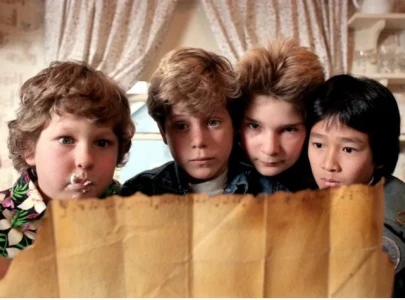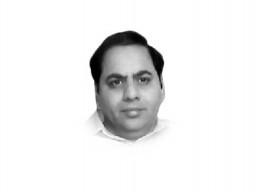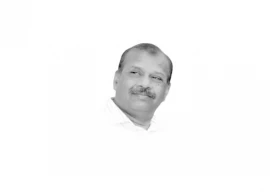Zakir Ali’s canvas is like a mirror – it reflects the truth without providing a feel-good image of society as he knows it or concealing its imperfections. It’s a mirror that takes what’s hidden and throws it back out there, bound in geometrical lines and forms – reality with a twist.
His watercolour paintings, pastel sketches and abstract artwork do not simply cover the negative aspects of the truth. In Ali’s attempt to preserve Khyber-Pakhtunkhwa’s rich heritage and indigenous culture, the 26-year-old artist based in the city seeks to provide a message of hope.
Ali’s oeuvre captures the challenges faced by Pukhtuns in these difficult and dangerous times through captivating images. But his canvas does not tell a story of suffering. It narrates a tale of optimism and hope.
“The way I paint is the way I observe the society around me,” he tells The Express Tribune. “My mission is to highlight the issues which plague society through my art. It is the need of the hour.”
According to Ali, hope is the only ingredient that can bring Pukhtuns out of their predicament.
“I urge people to remain optimistic and provide them with hope for change,” he explains. “We must realise war, insurgency and fear will eventually run its course. There is always hope for a better future. Marginalised sections of society must also realise there is light at the end of the tunnel.”
From Iqbal Hussain’s book
While Ali’s worldview is shaped by the society he belongs to, his inspiration comes from a variety of artists.
The 26-year-old artist says he is inspired by renowned impressionist Iqbal Hussain. “Hussain has reached the zenith of success only through his hard work and commitment,” he refers to the Lahore-based artist who rose to fame through his unflinching depiction of women who live in Heera Mandi—the city’s red light district.
Through his water colour and pastel paintings, Ali has tried to portray a similar degree of commitment. But he chooses to depict society’s condition through symbolism. Ali’s portrait of a horse is a metaphor for the conditions of Pukhtuns.
“A horse has a great deal of strength,” he says. “But it is used by people for their own purposes. This is what has happened to Pukhtuns.”
The artist has also ventured into abstract artwork to depict the challenges faced by society.
The 26-year-old artist has also made portraits of a Sufi Hindko poet who has remained largely forgotten in these modern times.
In the offing
According to Ali, the changing times have dealt a heavy blow to artists in the province.
Many of them have moved away to greener pastures where their work is valued. Those artists who have stayed on find themselves in a quagmire and find it hard to grow more, let alone foster new talent or preserve the importance of art.
“However, there has been some intellectual development over the past few years,” Ali explains, with the same degree of optimism that dominates his work. “Through this reawakening, the city will regain its lost grandeur, and art and literature will be revived.”
Ali claims Pukhtuns have faced countless problems for centuries.
“In every era, we have been exploited,” he says. “But we never realised our strength and thus did not make an effort to change our situation. This is why art and literature have been undermined and we have lost great parts of our heritage. At this stage, only hope can change our destiny.”
Published in The Express Tribune, July 12th, 2015.

















COMMENTS
Comments are moderated and generally will be posted if they are on-topic and not abusive.
For more information, please see our Comments FAQ